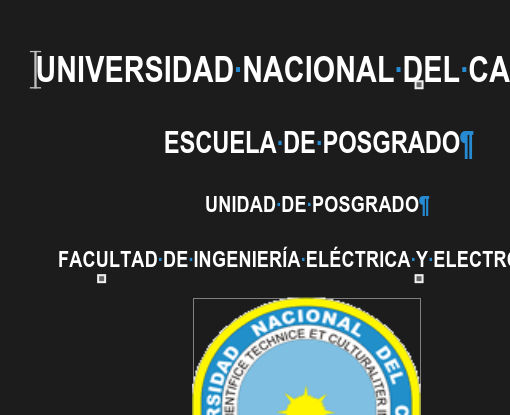in the image in “invisible” image that was in another page

this only happend when I add some lines to a LO Writer document with images, why happend this and how can I fix or avoid?
errors.odt (392.7 KB)

in the image in “invisible” image that was in another page

this only happend when I add some lines to a LO Writer document with images, why happend this and how can I fix or avoid?
errors.odt (392.7 KB)
Could you elaborate more on the problem?
What is the “invisible image”? The university coloured shield?
What was the initial state (“image on another page” – which page?)? What have you done (“added some lines” – where?)? What is the result (difference between expected and actual)?
My personal first-look comments:
I highly recommend you read at least the Writer Guide, in particular the chapter(s) about styles, and also Bruce Byfield’s Designing with LO available from the same link after clicking on “More” and scrolling down a bit. Reading the manual is not a waste of time, even if you feel you’re in a hurry, because your productivity will be boosted afterwards.
In case you are not fluent in English, there is also a Spanish leg of AskLO with several highly appreciated contributors.
this image was in another page, probably page 13, but I always have problems with images in libreoffice writer.
now When I opened same file i have moved images, no idea why:
vs
Which is the correct config?
According to the Navigator, the sample file contains only 3 images: the university coloured shield, a table in 1.1 and a “Grafico 1”. So, the screenshot above is not taken from the sample file but from your complete document. I can’t tell because the offending image is not present in the sample file.
Taming images so that they behave deterministically and predictably is the most difficult task in Writer. Success is guarantedd inly with frame styles which are unfortunately very hard to master and are much less bullet-proof than other style categories.
This is not surprising. I had a deeper look at “them”. I wrote plural form “them” because this is not a single image but a collection of drawing objects. You probably inserted them manually one by one and they ended up anchored to different paragraphs. Consequently when you edit your text, the empty paragraphs move (as is expected) and the shapes anchored to them move with the paragraphs while you expect them to move as a single block. When the paragraphs are scattered over two pages (like here due to font substitution), the shapes are no longer “correlated”. To make thing worse, position references are mixed: some are relative to page text area, others to paragraph test area or to entire paragraph area. This leads to inconsistencies when flow forces a different distribution of text.
Regarding the arrow and “Regulas subastas”, you entered these data in different layers: the arrow as graphics and text inside the regular flow (and the arrow is not even attached to one of the text paragraphs!).
A dirty fix would be th label the arrow because any shape can be labelled.
A much better fix is to design your schemas in Draw, group all the participating shapes (merging all selected shapes in a single object) and paste the group into Writer. Since it is now a single object, there is a single anchor and you eliminate 75% of the issues.
As already outlined, design all your multi-shape graphics in Draw, group them and paste the block.
Then check the anchor. Most of the time anchor To paragraph is the most versatile mode. However, since you seem to be a beginner in text processing with an office suite, you should perhaps anchor As character so that the drawing is made a huge character inside text and you can control its position with your usual direct formatting routine (because it is now a character like all others, albeit much bigger).
One last caveat: empty paragraphs are your enemies. They always play nasty tricks on your back, sooner or later, as demonstrated by the erratic moves of your shapes. But this is not the only problematic point. Even innocent-looking usages as empty paragraphs above or below headings will ruin your layout when you edit your text. The only medicine against this plague is paragraph styles and their Indents & Spacing properties, assisted by those in Text Flow.
Another remark: when your headings are correctly “tagged” with paragraph styles from the Heading n family, your table of contents (TOC) can be automatically generated, ensuring that page numbers are always correct (no manual patch needed).
@jtm4890
I found loads of character styles and paragraph styles. You should strictly reduce them. They will make your document unstable.
See also @ajlittoz’s advices (Writer Guide; Designing with LO) and how to generate a slim and stable formatting.
Probably caused by transferring the document from DOC(X) to .odt, as shown in character and list style collections…
And you (@jtm4890) messed up the style dictionary by detaching styles from Default Paragraph Style and “reorganising” the dependencies destroying the logical hierarchy.
Custom style names are an example of what not to do: names describe the visual effects instead of significance. This leads to style inflation which you no longer control because you never feel sure which style to apply, creating even more. Fortunately for you, you applied none.